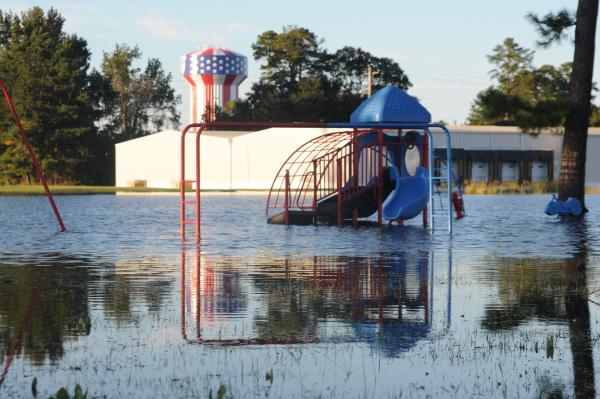
RALEIGH, N.C., Oct. 12 (UPI) — North Carolina reported 19 fatalities by Wednesday and rising rivers in the eastern part of the state in the aftermath of Hurricane Matthew.
Major roads, including sections of I-40 and I-95, are still closed, and 143,000 homes and businesses are still without power, down from Sunday’s peak of 800,000. Gov.Pat McCrory said 3,800 people are currently housed in 43 shelters and 34 school districts are closed.
The 19 people who died were mostly drownings in which people were trapped in vehicles that were swept away by floods. More than 2,000 people have been rescued, most of them from their homes, by boat. More than 400 boats are in use, and 90 helicopter rescues have been conducted.
The National Weather Service reported 18.38 inches of rain in Elizabethtown, in the southeastern part of the state, and 14 to 16 inches were dumped in other coastal areas. A wind speed of 86 mph was recorded at St. James Plantation in Brunswick County, on the coast near the state’s southern border with South Carolina.
While the coastal areas attempt to recover, attention is now turning to inland areas of eastern North Carolina, where river levels continue to rise. Evacuation orders are in place for the towns of Pitt and Princeville, as well as communities in Lenoir County, in anticipation of flooding; all are directly east of Raleigh, the state capital. The greatest current threat is of flooding in the central and eastern parts of the state, the North Carolina Department of Public Safety reported Wednesday. Conditions are expected to worsen along the Tar and Neuse Rivers, which are expected to crest within three days. The Tar River was at a record 29 feet Tuesday, with expectations it will rise to 35 feet. The Neuse River is expected to rise to 27 feet by Friday.
Residents along Cane Creek in Moore County, west of Fayetteville, were advised to evacuate; the fear is that the upstream Woodlake Dam, now reinforced with sandbags, will be breached by the water. Elsewhere in the county, people downstream of Lake Surf were evacuated because the dam holding back the lake was ready to burst, county officials said.
Several counties remain under a boil-water alert.
At a high school shelter in Tarboro, in hard-hit Edgecombe County in the central part of the state, 140 people were housed Tuesday night. Many had a similar experience in 1999, when floods caused by Hurricane Floyd forced their evacuation from their homes.





